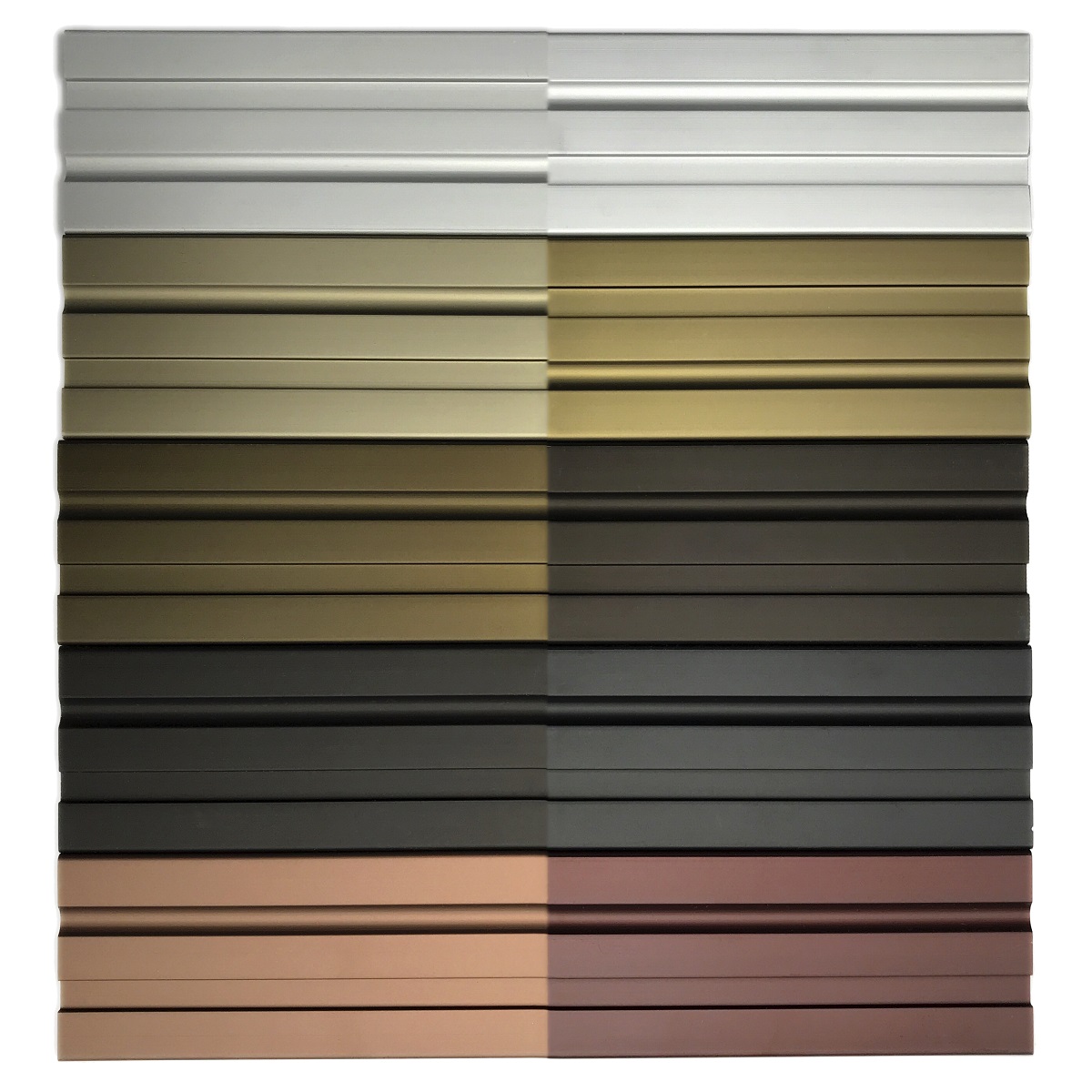Natural Metallic Tones Find Appeal

While the attractive appearance of natural metal is always on point, it seems building owners and architects have an increased interest in specifying metallic tones. Many are selecting finishes that accentuate the metal framing of windows, skylights, curtain wall, storefronts and entrances.
Architectural coatings can be enhanced with metal flake or carefully formulated to mimic the desired effect. Only anodized finishes deliver the optimal combination of metallic tones with the highest level of durability and performance for aluminum-framed fenestration systems.
Choosing the right color
The sleek, metallic look of anodize finishing often is associated with projects striving for a modern design. The elemental appeal of natural metal transcends the confines of a particular era or style.
The spectrum of colors for architectural anodize finishes is narrow, but may include more options than you realize. Clear anodize remains the most frequently specified because it allows the true properties of aluminum to shine, and typically is the most economical choice.
Standard colors also provide an affordable way to enhance the allure of aluminum. Finishing service partners generally present a choice of champagne, light to dark bronzes, and black. Black is a favorite for minimalistic, contemporary architectural designs. It also is approved for numerous historically styled projects that seek to replicate the look of classic steel windows and doors.
Copper anodize also bridges both modern and traditional tastes. It can reflect a high-tech, energetic brand and culture, or respectfully honor the old-world heritage of hand-crafted metalwork. A rich, earthy Bordeaux anodize recently was introduced as a color that challenges our assumptions about this finish, while providing the same, reliable, high performance.
Performance for Interior and Exterior applications
Class I anodize specified to meet AAMA 611 is the performance requirement you want for exterior applications. Complying with this spec, anodize aluminum finishes must withstand continuous outdoor exposure, including coastal conditions. They are tested to meet South Florida weathering conditions for color retention of 10 years or more, salt spray resistance for 3,000 hours or more, and usually are supported with a five- to 10-year warranty.
Class I also proves durable for high-traffic interiors contending with the many hands that touch its surface and regular daily bumps. For interior anodize applications that are out of reach or endure minimal traffic, a Class II specification with a lower mil thickness may be considered.
Choosing a high-performance product
Pairing the beauty and lasting performance of anodize finishes with recycled aluminum, thermally broken framing creates a winning combination to meet your customers’ green building goals. For projects striving to meet LEED, Living Building Challenge or WELL certification, be sure to check if your finishing service provider’s anodized aluminum has earned a Declare Label for Red List Free. This highest level Declare Label supports their submission requirements, as well as their project’s long-term sustainability and wellness goals.


